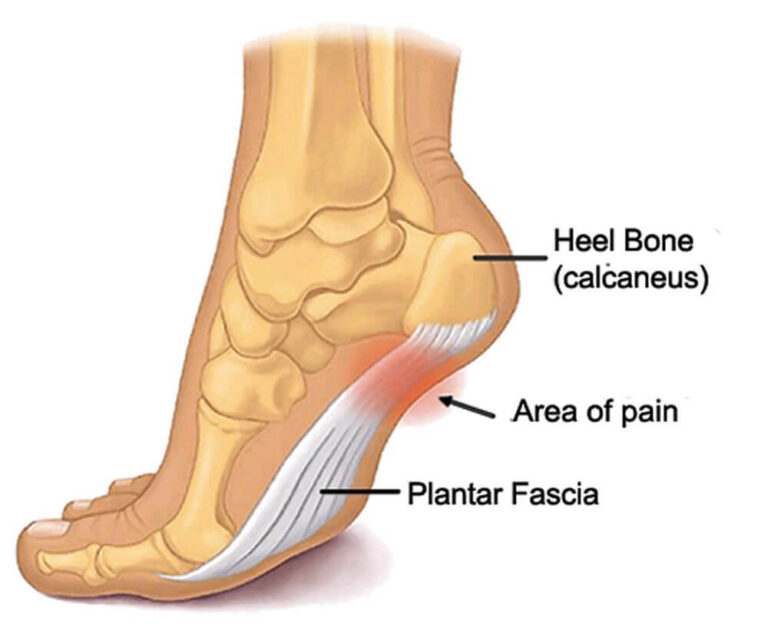Plantar fasciitis is a prevalent condition among runners, characterized by inflammation of the plantar fascia—a thick band of tissue connecting the heel bone to the toes. This inflammation leads to sharp heel pain, especially during the first steps in the morning or after prolonged periods of inactivity. Selecting appropriate running shoes is crucial for managing and alleviating the discomfort associated with plantar fasciitis.
Table of Contents
ToggleTop Running Shoes for Plantar Fasciitis
Here are some top-rated running shoes known for providing relief to individuals with plantar fasciitis:
1. Brooks Adrenaline GTS 23
- GuideRails Holistic Support System: Helps reduce unnecessary movement to keep your knees aligned and reduce stress on the plantar fascia.
- DNA LOFT cushioning: Offers a soft yet responsive ride for long-lasting comfort.
- Breathable Upper: Engineered mesh provides a secure fit and promotes airflow.
2. Brooks Glycerin GTS 21
- Super Soft DNA LOFT Midsole: Provides plush cushioning for maximum comfort.
- Integrated GuideRails Technology: Ensures added stability and reduces strain on the heel and arch.
- Wide Fit Options: Offers sizes catering to different foot shapes, making it ideal for plantar fasciitis.
3. Asics Gel-Nimbus 26
- Gel Technology in Heel and Forefoot: Absorbs shock and reduces impact on the plantar fascia.
- FlyteFoam Propel Cushioning: Adds a springy feel while maintaining support.
- 3D Space Construction™: Adapts to individual stride patterns for personalized comfort.
4. Hoka Bondi 8
- Extended Rocker Design: Promotes a smooth transition from heel to toe, reducing stress on the plantar fascia.
- Ultra-Cushioned EVA Midsole: Ensures soft landings and superior comfort for long runs.
- Padded Collar: Provides extra ankle support to enhance stability.
5. New Balance Fresh Foam X More v5
- Fresh Foam X Midsole: Delivers maximum cushioning to reduce pressure on sensitive areas.
- Wide Base and Supportive Design: Offers excellent stability for overpronators, a common trait in plantar fasciitis sufferers.
- Breathable Knit Upper: Keeps feet cool and dry during extended use.
Understanding Plantar Fasciitis

Plantar fasciitis involves the degeneration of collagen fibers in the plantar fascia at its origin, leading to heel pain. This condition is often caused by repetitive overstretching and micro-tears of the plantar fascia, commonly resulting from activities that place excessive stress on the heel, such as running.
Signs of Plantar Fasciitis
- Sharp pain in the heel, especially during the first steps after waking up.
- Increased pain after prolonged periods of standing or after exercise.
- Stiffness and discomfort in the heel and along the arch of the foot.
How to Find the Best Running Shoes for Plantar Fasciitis
When selecting running shoes, consider the following:
- Arch Support: Choose shoes that match your arch type (low, medium, or high) to provide adequate support.
- Cushioning: Opt for shoes with moderate cushioning to absorb impact without compromising stability.
- Heel Support: A deep heel cup can help stabilize the heel and reduce strain on the plantar fascia.
- Midsole Rigidity: Shoes with a stiff midsole can decrease stress on the plantar fascia during running.
How to Find the Best Running Shoes for Plantar Fasciitis
Proper Fit: Ensure there’s adequate room in the toe box without being too loose.
Breathability: Materials that allow airflow can keep feet cool and dry.
Durability: High-quality materials that withstand regular use without losing support.
What to Avoid if You Have Plantar Fasciitis
High Heels: They can increase pressure on the forefoot and exacerbate symptoms.
Flat Shoes: Lack of arch support can strain the plantar fascia.
Worn-Out Footwear: Shoes that have lost their cushioning and support can worsen the condition.
Additional Tips for Living with Plantar Fasciitis
Stretching Exercises: Regularly stretch the calf muscles and plantar fascia to alleviate tension. Orthotic Inserts: Custom or over-the-counter insoles can provide additional support. Rest and Ice: Resting the foot and applying ice can reduce inflammation and pain. Consult a Professional: Seek advice from a podiatrist or physical therapist for personalized treatment options.
Selecting the right running shoes, combined with proper foot care and lifestyle adjustments, can significantly alleviate the discomfort associated with plantar fasciitis and enhance your running experience.











